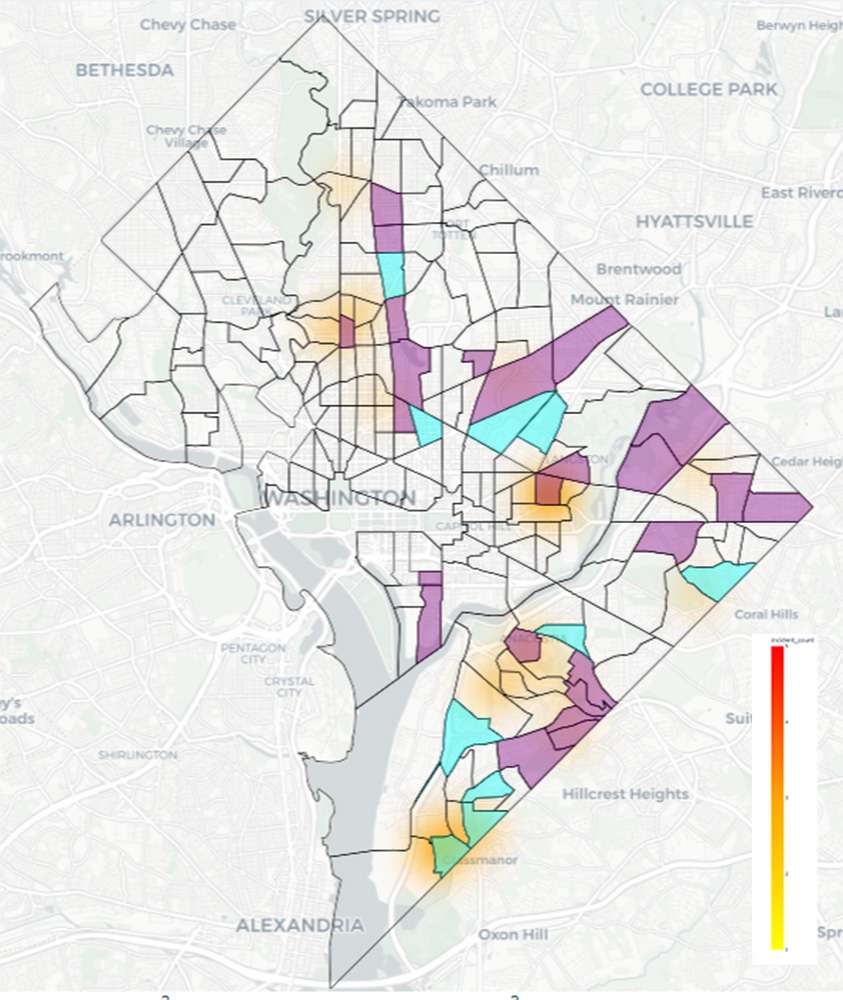Neighborhoods with Violence Interrupter programs aimed at curbing the most dangerous crimes still had 60 percent of the District’s homicides and 29 percent of nonfatal shootings between June 2023 and June 2024, according to D.C. Witness data.
During that period there were 95 homicides and 89 nonfatal shootings in DC. Of these homicides, 60 occurred in neighborhoods where government officials have established Violence Interrupter Programs to intervene in and prevent violent crime. Twenty-six of the nonfatal shootings occurred in these areas.
Violence Interrupter programs were implemented in 2018 in DC in high-crime neighborhoods and feature investments in community programs, direct intervention in violent incidents, and connecting at-risk individuals with mental health resources.
Priority Communities, represented by the purple areas in the map, is a violence interrupter program established by the Office of Neighborhood Safety and Engagement in 2018 that serves 27 communities in DC. According to D.C. Witness data, between June 2023 and June 2024 areas under Priority Communities had 26 homicides and 13 nonfatal shootings.
Cure the Streets, represented by the blue areas in the map, is a violence interrupter program established by the Office of the Attorney General in DC that serves 10 communities in the District. According to D.C. Witness data, between June 2023 and June 2024 areas under Cure the Streets had 34 homicides and 13 nonfatal shootings.
Congress Heights was the deadliest area in DC with 16 homicides and 7 nonfatal shootings, but it has implemented a Cure the Streets program. According to Cure the Streets Data, gun-involved violent crimes in the neighborhood are down 45 percent in 2024.



